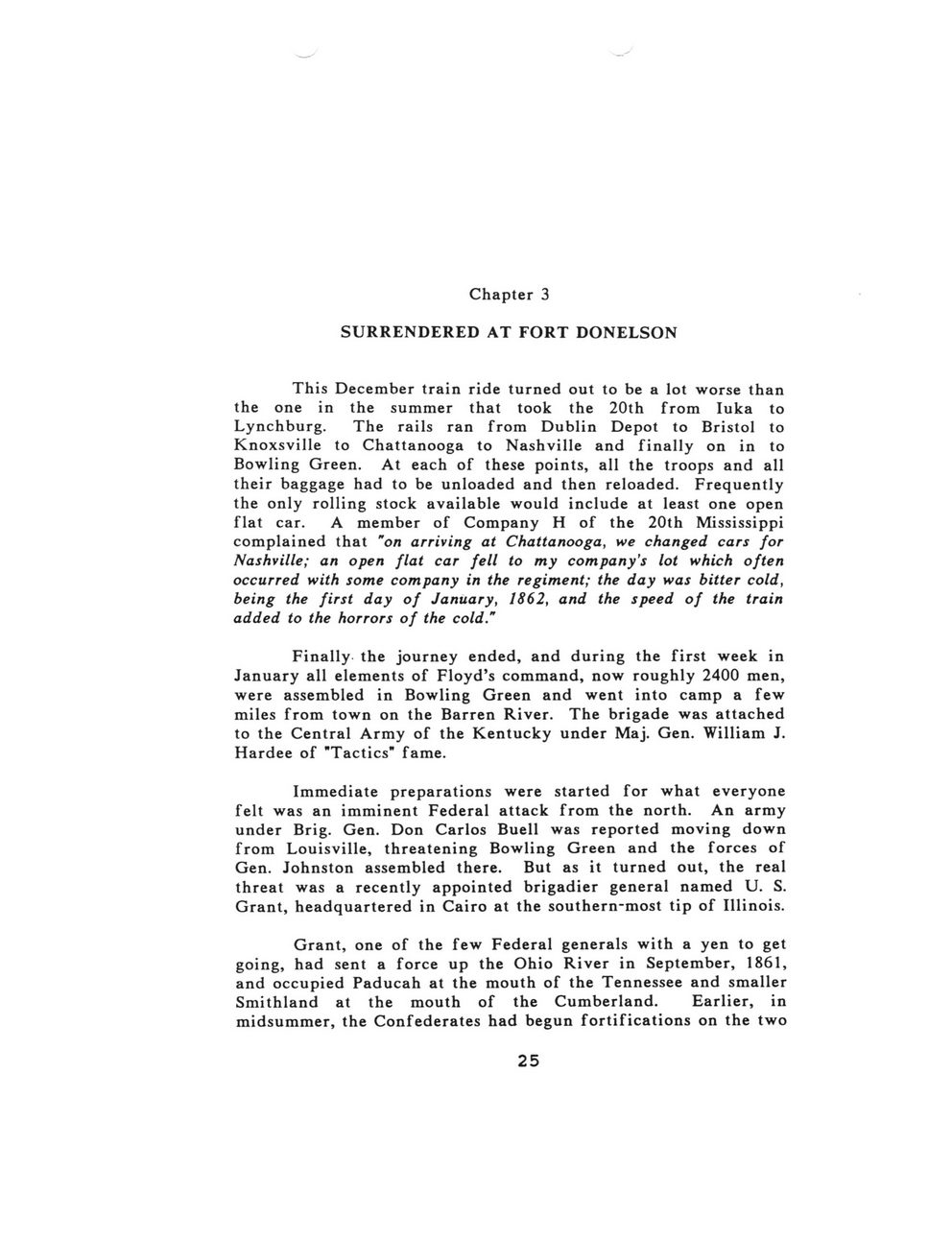This text was obtained via automated optical character recognition.
It has not been edited and may therefore contain several errors.
Chapter 3 SURRENDERED AT FORT DONELSON This December train ride turned out to be a lot worse than the one in the summer that took the 20th from Iuka to Lynchburg. The rails ran from Dublin Depot to Bristol to Knoxsville to Chattanooga to Nashville and finally on in to Bowling Green. At each of these points, all the troops and all their baggage had to be unloaded and then reloaded. Frequently the only rolling stock available would include at least one open flat car. A member of Company H of the 20th Mississippi complained that "on arriving at Chattanooga, we changed cars for Nashville; an open flat car fell to my company?s lot which often occurred with some company in the regiment; the day was bitter cold, being the first day of January, 1862, and the speed of the train added to the horrors of the cold.? Finally the journey ended, and during the first week in January all elements of Floyd?s command, now roughly 2400 men, were assembled in Bowling Green and went into camp a few miles from town on the Barren River. The brigade was attached to the Central Army of the Kentucky under Maj. Gen. William J. Hardee of "Tactics" fame. Immediate preparations were started for what everyone felt was an imminent Federal attack from the north. An army under Brig. Gen. Don Carlos Buell was reported moving down from Louisville, threatening Bowling Green and the forces of Gen. Johnston assembled there. But as it turned out, the real threat was a recently appointed brigadier general named U. S. Grant, headquartered in Cairo at the southern-most tip of Illinois. Grant, one of the few Federal generals with a yen to get going, had sent a force up the Ohio River in September, 1861, and occupied Paducah at the mouth of the Tennessee and smaller Smithland at the mouth of the Cumberland. Earlier, in midsummer, the Confederates had begun fortifications on the two 25

Baxter, Marion Francis Marion-Francis-Baxter-Bio.-025